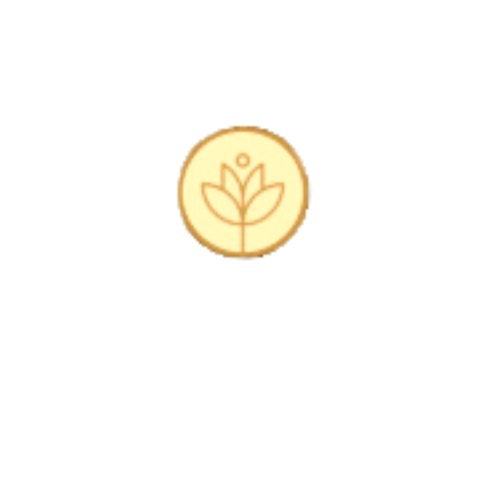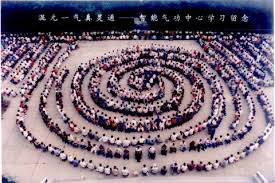What is Zhineng Qigong?
Zhineng Qigong, also known as Wisdom Healing Qigong or Chi Lel Qigong, is a comprehensive system of mind-body practice that emerged from China in the 1980s. Developed by Dr. Pang Ming (also known as Dr. Ming Pang), a doctor trained in both Western medicine and traditional Chinese medicine, Zhineng Qigong combines traditional qigong principles with modern scientific understanding of the human body and mind. The name “Zhineng” can be translated as “Intelligent” or “Wisdom” Qigong, reflecting its focus on using conscious mind to direct qi for healing and wellbeing.
Origins and Development
Dr. Pang Ming founded the Huaxia Zhineng Qigong Center (also known as the “Medicineless Hospital”) in 1988 in Qinhuangdao, China. This center became one of the largest qigong healing centers in the world, spanning over 800 acres. Before its closure in 2001, the center treated over 300,000 patients with various health conditions, documenting a remarkable 95% effective improvement rate across more than 180 diseases. The center gained international attention when researchers and doctors from around the world came to study its effectiveness.
Dr. Pang’s background is particularly impressive – he was a Qigong grandmaster trained by 19 Qigong grandmasters from various traditions, a Western medical doctor, and a doctor of Chinese medicine. This unique combination allowed him to create a system that integrated ancient wisdom with contemporary approaches to health and conduct extensive scientific research on the effects of Zhineng Qigong.
Core Philosophy
At the heart of Zhineng Qigong is the concept of “qi” (life energy) and the understanding that this vital force can be consciously directed to enhance health and wellbeing. The practice emphasizes the connection between mind and body, teaching practitioners to use focused intention and awareness to influence their physical condition.
Zhineng Qigong is built on a theoretical framework called “Hunyuan Entirety Theory,” which understands the universe as a unified whole composed of “hunyuan qi” – the most fundamental substance of existence. According to this theory, everything in the universe, including human beings, is made up of and connected by this primordial qi.
Several key principles define the Zhineng Qigong approach:
- Unity of consciousness and qi: The belief that where attention goes, energy flows
- Qi follows consciousness: The idea that mental focus can direct healing energy throughout the body
- Oneness with nature: The understanding that humans are not separate from, but connected to, the universal energy field
- Gathering qi from the Hunyuan entire qi field: The practice of drawing healing energy from the universal source
- The central role of consciousness (Yi Yuan Ti): Using the power of focused intention as the primary tool for transformation
Practice Methods
Zhineng Qigong is organized into three distinct levels, each containing specific methods and practices. Here are the core practices within the system:
Level One Methods
- Peng Qi Guan Ding Fa (Lift Qi Up Pour Qi Down): The foundational practice that helps circulate energy throughout the body and connects the practitioner to the universal qi field. This method includes both static and dynamic forms.
- La Qi (Pulling Qi): A method to gather qi from the Hunyuan entire qi field into the body.
- Three Centers Merge Standing Meditation: A powerful posture that aligns and integrates the body’s three primary energy centers (lower dantian, middle dantian/heart center, and upper dantian).
- Chen Qi (Sinking Qi): A practice for directing qi to specific areas of the body for healing.
Level Two Methods
- Body and Mind Method: More advanced techniques that enhance the mind’s ability to direct healing energy and develop deeper awareness.
- Five Organ Healing Sound: Specific sounds that resonate with and help balance the five organ systems according to Traditional Chinese Medicine.
- Wall Squatting: A strengthening practice that builds internal energy while developing leg strength and stability.
Level Three Methods
- Xing Shen Zhuang (Body Mind Form): Advanced methods for integrating consciousness with physical movement.
- Hun Yuan Xiang Gong (Unification of Qi Field): Higher-level practices for merging with the universal qi field.
These methods combine gentle, flowing movements, specific postures, focused breathing, and mental direction. What makes Zhineng Qigong distinctive is its emphasis on creating and working within a strong qi field, using specially designed movements that maximize qi collection and the power of group practice.
Health Benefits and Scientific Research
Zhineng Qigong is unique among qigong systems for the extensive scientific research conducted on its effects. At the Huaxia Center, Dr. Pang and his team documented thousands of case studies and conducted formal research on the practice’s healing effects. Research and clinical observations suggest Zhineng Qigong offers numerous health benefits:
- Reduced stress and anxiety
- Improved immune function and blood cell counts
- Better sleep quality
- Enhanced cardiovascular health
- Increased energy and vitality
- Greater emotional balance
- Improved concentration and mental clarity
- Pain reduction
- Accelerated recovery from illness and surgery
- Normalization of blood pressure
- Improvement in chronic conditions like diabetes, cancer, and heart disease
Studies conducted at the Huaxia Center showed particularly promising results for conditions including:
- Cardiovascular diseases (93% improvement rate)
- Digestive system disorders (95% improvement rate)
- Respiratory problems (95% improvement rate)
- Joint and bone diseases (96% improvement rate)
The practice is accessible to people of all ages and fitness levels, as movements can be adapted to individual needs and abilities. Many practitioners begin with simple seated practices and gradually progress to more dynamic movements as their health improves.
Modern Practice and Teaching Centers
After the closure of the Huaxia Center in 2001, many of Dr. Pang’s senior students and teachers spread throughout China and internationally, establishing teaching centers to preserve and share this powerful system. Today, Zhineng Qigong has spread beyond China and is practiced in over 30 countries worldwide, with particularly strong communities in Europe, North America, and Southeast Asia.
The practice is known for its emphasis on group practice, which is said to create a stronger “qi field” that enhances individual healing. Many practitioners value it not only as a healing art but as a comprehensive approach to wellness that addresses physical, mental, and spiritual dimensions of health.
Many teachers emphasize the importance of regular, consistent practice and the value of practicing in groups whenever possible to maximize the benefits of the shared qi field.
Conclusion
Zhineng Qigong represents a bridge between traditional Chinese healing arts and contemporary wellness practices. Its systematic approach to energy cultivation, backed by scientific research and documented clinical outcomes, offers a comprehensive method for those seeking to enhance their health naturally, develop greater self-awareness, and tap into the body’s innate healing capabilities.
What distinguishes Zhineng Qigong from many other qigong systems is its accessibility, systematic structure, and the extensive documentation of its health benefits. Practitioners often report not only physical improvements but also enhanced mental clarity, emotional stability, and a deeper sense of connection to themselves and the world around them.
As interest in integrative health practices continues to grow globally, Zhineng Qigong offers a time-tested methodology that combines the wisdom of ancient energy practices with a modern, scientifically-informed approach to health and healing. For those interested in exploring this practice, resources are widely available through certified teachers, books, videos, and online communities dedicated to preserving and sharing Dr. Pang Ming’s remarkable healing system.

